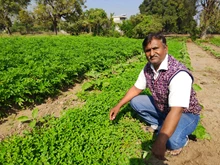
Deen Dayal Antyodaya Yojana (DAY) was created with the intention of improving sustainable livelihood prospects for urban disadvantaged people via skill development. With the Make in India goal in mind, skill development is crucial for socioeconomic improvement.
Under the direction of the Ministry of Housing and Urban Poverty Alleviation, Deen Dayal Antyodaya Yojana was established (HUPA). 500 crore rupees have been set out by the Indian government for the scheme.
The National Rural Livelihoods Mission (NRLM) and National Urban Livelihoods Mission are combined in the plan (NRLM).
Deen Dayal Antyodaya Yojana-(DAY-NULM), also known as Rashtriya Shahri Aajeevika Mission in Hindi, is the new name for the National Urban Livelihoods Mission (NULM). According to the plan, urban areas include all 4041 statutory cities and towns, thereby covering the majority of urban residents. Currently, only 790 towns and cities are covered by all urban alleviating poverty.
What are the components of DAY-NULM?
One part of this system is for urban India, and the other is for rural India.
The Ministry of Housing and Urban Poverty Alleviation will carry out the Deen Dayal Antyodaya Yojana's urban component.
The Ministry of Rural Development will implement the Deen Dayal Upadhyaya Grameen Kaushalya Yojana, which is the name of the rural component.
Highlights of the Deen Dayal Antyodaya Yojana:
Employment through Skill Training and Placement - An allowance of Rs. 15,000 per person, or Rs. 18,000 in the North-East and J&K, is made for training urban poor people. Moreover, through teaching market-oriented skills through City Livelihood Centers, the urban poor are trained to satisfy the large demand from urban residents.
The creation of Self-Help Groups (SHG) will be used for social mobilization and institution development; each SHG will get an initial grant of 10,000 to fund member training and support. Registered Area Level Federations are given assistance in the amount of Rs. 50,000.
For the establishment of individual micro-companies with a loan ceiling of up to Rs. 2 lahks and for group enterprises with a loan limit of up to Rs. 10 lakhs, there is an interest subsidy of between 5% and 7%.
Shelters for the homeless in cities - The cost of building shelters for the destitute in cities is entirely covered by the Scheme.
The establishment of infrastructure and specialized programs for rag pickers, the differently abled, etc. are further methods for expanding vendor marketplaces and promoting vendor skills.
Guiding Principles
Poor people have a strong desire to escape poverty and intrinsic abilities.
To fully utilise the intrinsic potential of the impoverished, social mobilisation and the development of robust institutions for the poor are essential.
The process of social mobilisation, institution building, and empowerment must be sparked by an external, committed, and sensitive support framework.
This upward mobility is supported by facilitating information sharing, skill development, credit access, marketing access, and access to other livelihood services.











